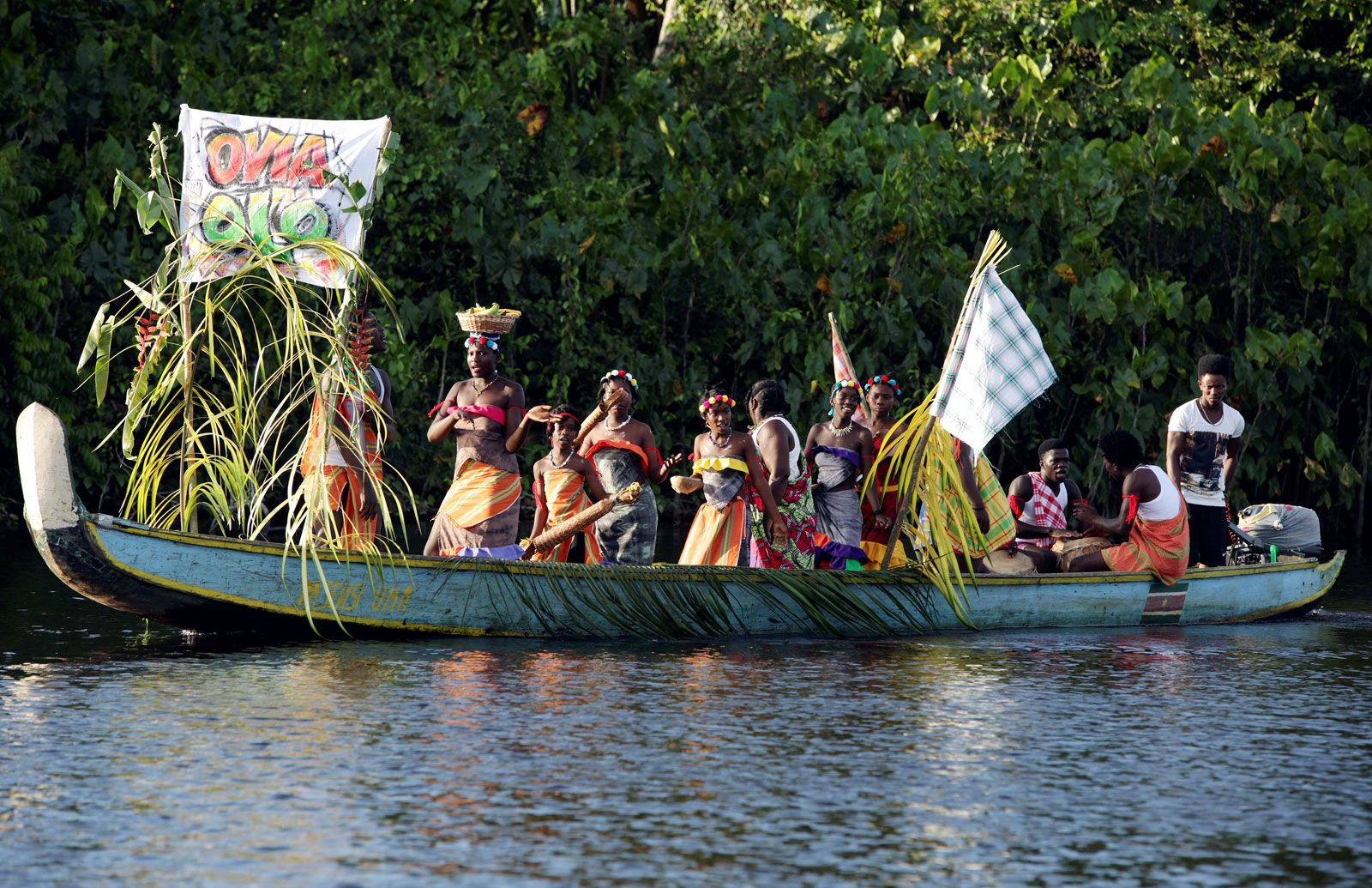Do you know about the role of Maroon communities in Suriname’s history? It’s a fascinating topic that sheds light on the resilience and resistance of enslaved Africans who escaped from plantations and formed their own communities in the dense forests of Suriname. In this article, we’ll explore the significance of these Maroon communities and how they have shaped Suriname’s history.
Suriname, located on the northeast coast of South America, was a Dutch colony during the height of the transatlantic slave trade. Thousands of Africans were forcibly brought to Suriname to work on sugar, coffee, and cocoa plantations under brutal conditions. However, not all slaves accepted their fate and tried to escape. Those who managed to break free formed Maroon communities, also known as “marronage,” in the inhospitable rainforests.
These Maroon communities played a crucial role in Suriname’s history by mounting resistance against the Dutch colonial forces. They developed their own social and political structures, cultivated their own crops for survival, and defended their territories against attacks. The Maroons’ ability to adapt to the challenging environment and unite against their oppressors allowed them to maintain their autonomy and freedom for generations. By learning about the history and contributions of Maroon communities, we can better appreciate the strength and resilience of those who fought against slavery and oppression.
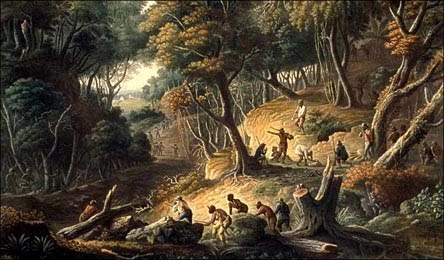
Introduction to Maroon Communities
Maroon communities have played a significant role in the history of Suriname, shaping the cultural, social, and political landscape of the country. These communities, also known as Quilombolas, are descendants of enslaved Africans who escaped from plantations during the era of Dutch colonialism. Today, they continue to thrive as vibrant, independent settlements, preserving their African cultural traditions and fighting against oppression. This article explores the origin, formation, and significance of Maroon communities in Suriname, as well as their leadership, economy, social structures, resistance movements, relations with colonial powers, cultural expression, contemporary influence, recognition and preservation of heritage, tourism, and socioeconomic development.
Definition of Maroon Communities
Maroon communities are self-sustaining settlements formed by enslaved Africans who managed to escape from plantations in Suriname. These communities were established in remote, inaccessible regions such as dense rainforests and riverbanks, enabling the Maroons to evade capture by European colonizers. Maroons developed their own distinct societies, blending African cultural traditions with indigenous practices and adapting to the natural environment. The term “Maroon” originated from the Spanish word “cimarrón,” meaning wild or untamed, reflecting the independent and resilient nature of these communities.
Origin and Formation of Maroon Communities
The history of Maroon communities in Suriname can be traced back to the arrival of African slaves during the Dutch colonial period. Enslaved Africans were forced to work on sugar and coffee plantations, enduring harsh conditions and brutal treatment. However, many slaves risked their lives by escaping into the wilderness, seeking refuge from the oppressive regime. These fugitive slaves formed alliances with indigenous peoples, utilizing their knowledge of the land and resources to establish hidden settlements. Over time, these communities grew stronger, engaging in guerrilla warfare and establishing a sense of autonomy from the colonial powers.
Significance of Maroon Communities in Suriname
Preservation of African Culture and Traditions
Maroon communities have played a crucial role in preserving African cultural traditions in Suriname. Despite the trauma of enslavement, Maroons have managed to retain their ancestral practices and pass them down through generations. These traditions encompass music, dance, storytelling, spirituality, food, and dress, providing a sense of identity and continuity. Maroons maintain a strong connection to their African roots, integrating traditional customs into their daily lives and community celebrations. By preserving their culture, Maroon communities contribute to the rich diversity of Suriname’s cultural heritage.
Resistance and Fight against Colonial Oppression
Maroon communities have also been at the forefront of resistance against colonial oppression. Fueled by the desire for freedom and justice, Maroons engaged in organized rebellions and guerrilla warfare tactics, challenging the dominance of the colonial powers. Their strategic knowledge of the terrain and their ability to mobilize fighters gave them a significant advantage in the fight against European forces. Maroon leaders, such as the legendary figures of Boni and Baron, emerged as visionary strategists and symbols of resistance. The bravery and determination of the Maroons played a pivotal role in undermining the legitimacy of slavery and paving the way for Suriname’s eventual independence.
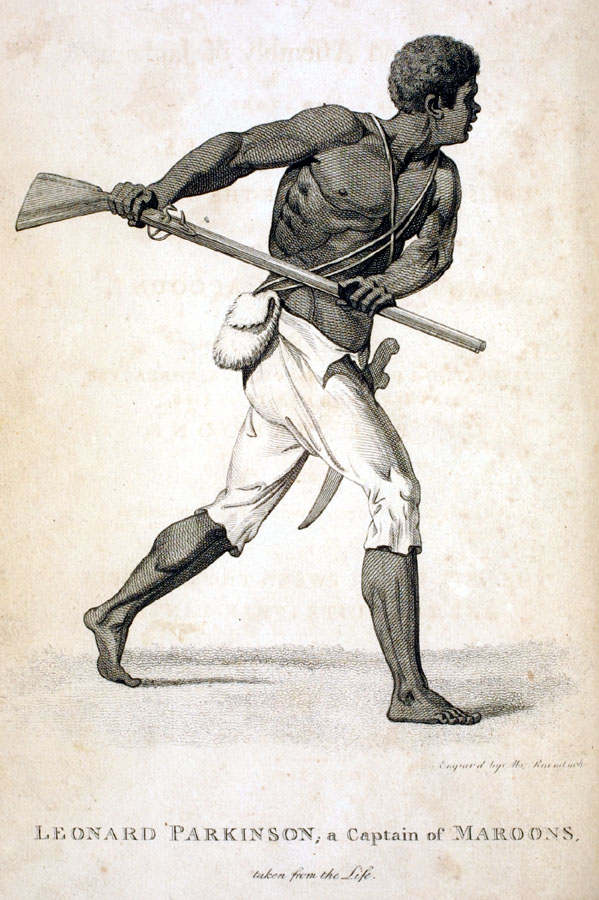
The Establishment of Maroon Communities
Escape from Plantations
Escaping from the plantations was a difficult and dangerous endeavor for enslaved Africans. However, many managed to run away, facing the perils of the dense Surinamese rainforest in their quest for freedom. These daring escapes often involved careful planning and coordination among the enslaved individuals, who sought refuge in secluded areas far from the reach of plantation owners and colonial authorities.
Creation of Independent Settlements
Once enslaved Africans reached the safety of the wilderness, they established independent settlements known as Maroon communities. These communities were located in remote and inaccessible areas, offering protection and a sense of collective identity. Maroons built huts and houses, cultivated crops, and developed a sustainable way of life within their settlements. The establishment of these communities allowed the Maroons to govern themselves, forming their own laws, traditions, and social structures.
Leadership and Governance
Role of Maroon Leaders
Maroon communities are governed by respected leaders who possess the necessary skills and knowledge to guide the community effectively. These leaders, often referred to as captains or granmans, hold significant authority and are responsible for making crucial decisions, resolving disputes, and maintaining social order. Their leadership is based on a combination of ancestral wisdom, experience, and the trust bestowed upon them by the community. Maroon leaders are seen as custodians of traditions, assuring the continuity of cultural practices and the wellbeing of their people.
Community Decision-making Processes
In Maroon communities, decision-making is a collective process that involves the participation of all community members. Important decisions, such as the allocation of resources, resolution of disputes, and matters concerning the welfare of the community, are often discussed in community meetings or assemblies. Each member has the opportunity to voice their opinions and contribute to the decision-making process. Consensus is highly valued, and the opinions of elders and respected individuals carry weight in shaping the community’s direction.
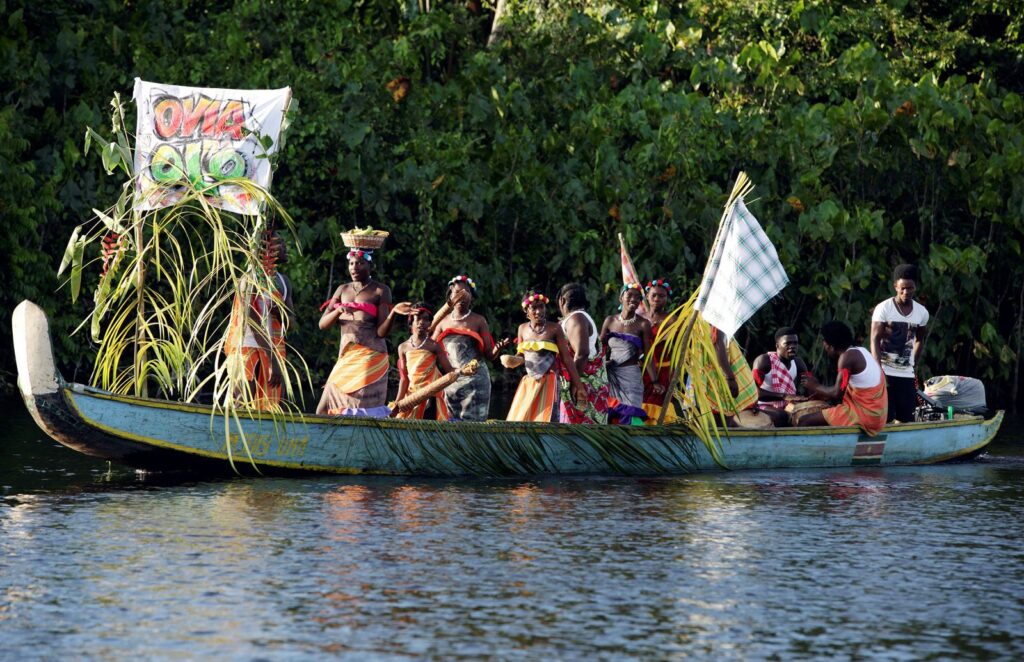
Maroon Economies
Subsistence Agriculture and Hunting
Maroon communities rely heavily on subsistence agriculture and hunting as their primary means of sustenance. With their deep knowledge of the land and its resources, Maroons cultivate crops such as cassava, sweet potatoes, maize, and bananas. These agricultural practices are often interwoven with spiritual beliefs and traditional rituals, emphasizing the close bond between humans and nature. Hunting also plays a significant role in the Maroon economy, providing protein-rich food sources and materials for crafts and trade.
Trade and Interactions with Other Communities
Maroon communities engage in trade and exchange relationships with other communities, both within Suriname and beyond. They produce and exchange various goods, including agricultural products, handicrafts, medicinal herbs, and traditional clothing. Trade allows Maroons to access resources that may not be readily available in their communities, while also fostering social connections and cultural exchange. Through these interactions, Maroons have formed networks and alliances with other communities, expanding their influence and contributing to the social and economic dynamics of Suriname.
Maroon Social Structures
Family and Kinship Systems
Maroon communities place a strong emphasis on family and kinship ties. The family unit is the foundation of the community, providing support, care, and guidance to its members. Maroons maintain extended family connections, often residing in close proximity to their relatives. Kinship systems are based on both biological relationships and spiritual beliefs, with ancestral connections and lineage playing an important role in defining social roles and responsibilities. Elders are highly respected and are considered custodians of history, traditions, and oral narratives.
Community Cohesion and Social Rituals
Maroon communities prioritize community cohesion and social bonding through various rituals and ceremonies. These rituals serve to celebrate important life events, honor ancestors, seek spiritual guidance, and strengthen social ties. Drumming, dances, and singing are integral parts of Maroon rituals, creating a sense of unity and shared identity. These social gatherings not only provide a platform for cultural expression but also act as mechanisms for conflict resolution, healing, and collective decision-making.
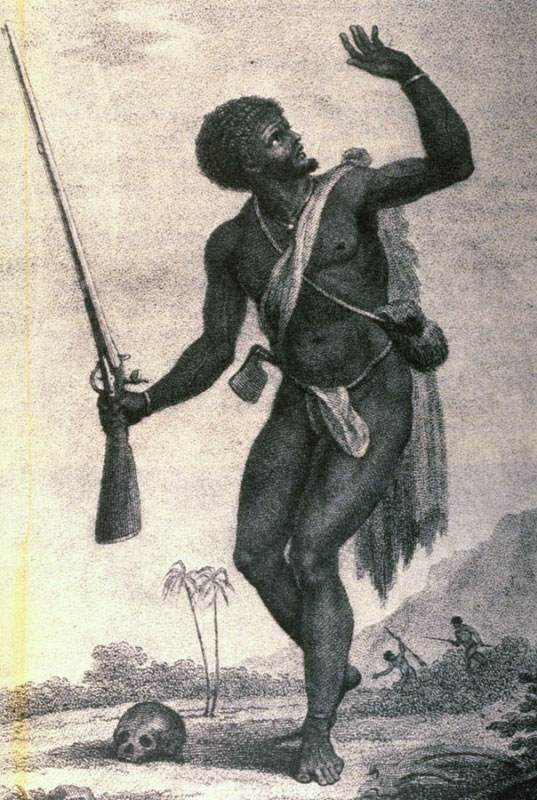
Maroon Resistance Movements
Guerrilla Warfare Tactics
Maroon communities have a long history of engaging in guerrilla warfare tactics to resist colonial oppression. The dense rainforests and intricate waterways of Suriname provided ideal terrain for the Maroons to launch surprise attacks and evade capture. Their knowledge of the environment, combined with their perseverance and courage, enabled them to outmaneuver European forces for years. Guerrilla warfare tactics played a crucial role in wearing down the colonial powers, forcing them to make concessions and ultimately contributing to the abolition of slavery.
Alliances with Indigenous Peoples
Maroons formed alliances with indigenous peoples, recognizing their shared struggles against colonial oppression. These alliances were based on mutual interests, cultural affinities, and a common desire for freedom. By collaborating with indigenous groups, Maroons expanded their networks and gained access to valuable resources and knowledge. These alliances strengthened their resistance movements, enabling them to confront colonial powers with greater effectiveness and resilience.
Relations with Colonial Powers
Negotiations and Treaties
Maroons engaged in negotiations with colonial powers, seeking recognition of their autonomy and rights. Throughout history, various treaties were signed between Maroon communities and the Dutch colonial authorities, outlining terms for peace, land rights, and the recognition of cultural practices. These treaties represented significant milestones in the fight for Maroon autonomy and helped establish a legal framework for the governance of Maroon communities.
Impact of Colonial Policies
Despite the existence of treaties, Maroon communities faced ongoing challenges due to the impact of colonial policies. The Dutch colonial authorities often sought to exert control over Maroons, implementing policies that limited their mobility, economic independence, and access to resources. Maroons continually resisted these policies, asserting their right to self-governance and cultural autonomy. The legacy of colonialism continues to reverberate in contemporary Suriname, shaping the socioeconomic disparities experienced by Maroon communities.
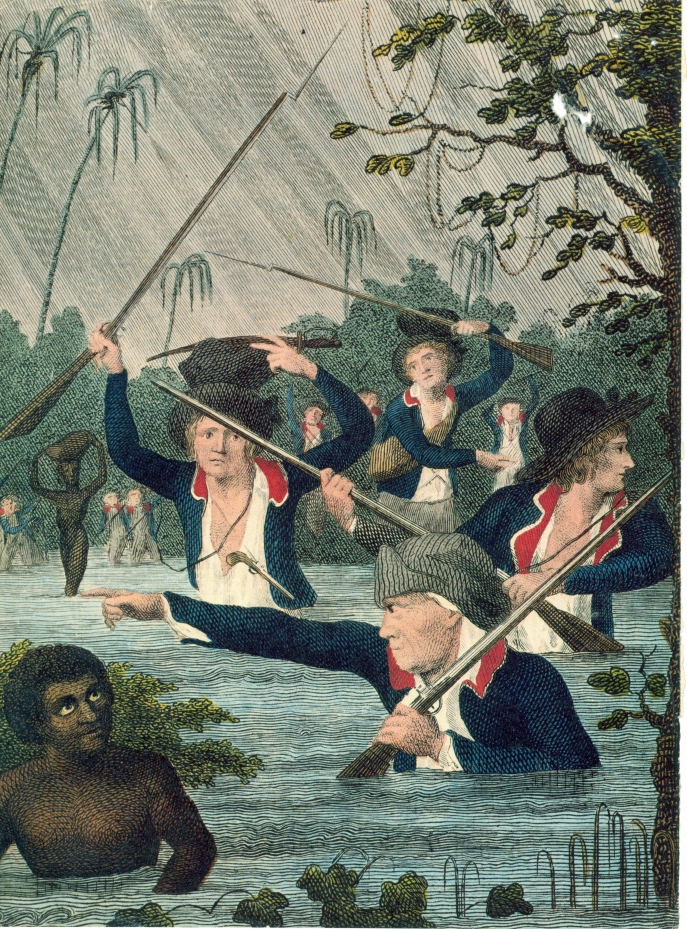
Cultural and Artistic Expression
Music, Dance, and Drumming Traditions
Maroon communities have a vibrant tradition of music, dance, and drumming. Music plays a central role in Maroon cultural expression, serving as a medium for storytelling, cultural transmission, and spiritual connection. Drumming, accompanied by intricate rhythms and energetic dances, forms the heartbeat of Maroon music. These traditions are deeply rooted in African heritage, combining elements of African rhythms, indigenous melodies, and European influences. Maroon music and dance continue to thrive as living traditions, celebrated within the communities and embraced by wider Surinamese society.
Visual Arts and Crafts
Maroons are renowned for their artistic prowess and craftsmanship. They create intricate and ornate objects using traditional techniques passed down through generations. These crafts include woodcarving, basket weaving, pottery, and beadwork, showcasing the creativity and skill of Maroon artists. The visual arts serve as a means of cultural expression, symbolizing identity, heritage, and spirituality. Maroon artwork has gained recognition both nationally and internationally, contributing to the preservation and promotion of Maroon cultural heritage.
Maroon Communities and Contemporary Suriname
Social, Political, and Economic Influence
Maroon communities continue to exert social, political, and economic influence in contemporary Suriname. The struggle for the recognition of Maroon rights and autonomy has led to the establishment of political parties and organizations representing Maroon interests. Maroon leaders play active roles in national politics, advocating for the rights of their communities and fighting against social injustices. Maroon culture and traditions have also contributed to the diverse fabric of Surinamese society, shaping national identity and fostering intercultural dialogue.
Challenges and Opportunities
Maroon communities face various challenges in the modern era. Economic disparities, limited access to education and healthcare, and environmental threats pose significant obstacles to their development. However, these challenges also present opportunities for growth and empowerment. Efforts are being made to address these issues, with projects focused on education, healthcare, and economic empowerment. Maroon communities are harnessing their cultural heritage as a tool for social and economic development, promoting sustainable tourism initiatives, and fostering collaborations with international partners.
Recognition and Preservation of Maroon Heritage
UNESCO Designation of Maroon Heritage Sites
The importance of Maroon cultural heritage has been recognized on a global scale. In 2003, UNESCO inscribed the Maroon Heritage of the Paramaribo and Saramaka Peoples on the Representative List of the Intangible Cultural Heritage of Humanity. This designation acknowledges the significance of Maroon cultural practices in the context of human cultural diversity and strengthens efforts to protect and preserve Maroon heritage for future generations.
Efforts to Document and Promote Maroon Culture
Numerous initiatives are underway to document, promote, and safeguard Maroon culture. Oral history projects, academic research, and cultural documentation have helped to highlight the richness and diversity of Maroon traditions. Art exhibitions, cultural festivals, and educational programs promote awareness and appreciation of Maroon heritage among Surinamese society and international visitors. These efforts play a vital role in ensuring the continuity and vibrancy of Maroon culture.
Tourism and Cultural Exchange
Maroon Tourism Initiatives
Maroon communities are actively engaged in tourism initiatives, offering visitors the opportunity to experience their unique way of life and cultural traditions. Tourists can participate in authentic cultural activities, such as traditional cooking, dance workshops, and visits to historical sites. Maroon tourism not only provides economic opportunities for the communities but also fosters intercultural understanding and appreciation of Maroon cultural heritage.
Cultural Exchanges with International Visitors
Maroon communities also engage in cultural exchanges with international visitors, fostering dialogue and promoting an exchange of ideas and experiences. International artists, researchers, and students often collaborate with Maroon communities, gaining insights into Maroon cultural practices and contributing to the documentation and promotion of Maroon heritage. These exchanges serve as platforms for cross-cultural learning, challenging stereotypes, and building bridges between different communities.
Socioeconomic Development of Maroon Communities
Education and Healthcare in Maroon Villages
Efforts are being made to address the educational and healthcare needs of Maroon communities. Schools and healthcare facilities have been established in many Maroon villages, providing essential services and improving access to education and healthcare. These initiatives aim to empower Maroon individuals and communities, providing them with the tools and opportunities to navigate the challenges of the modern world while preserving their cultural heritage.
Economic Empowerment Projects
Economic empowerment projects are crucial for the sustainable development of Maroon communities. These initiatives focus on diversifying livelihood options, promoting entrepreneurship, enhancing agricultural practices, and creating income-generating opportunities. Local cooperatives, crafts associations, and tourism enterprises contribute to the economic growth of Maroon communities, fostering self-reliance, and reducing dependency on external forces.
Conclusion
Maroon communities have played a significant role in shaping the history, culture, and identity of Suriname. Through resistance, resilience, and perseverance, Maroons have preserved their African cultural traditions, contributed to Suriname’s fight against colonial oppression, and secured a place for themselves in the fabric of Surinamese society. The recognition, preservation, and promotion of Maroon culture are essential for ensuring the continued existence of these vibrant communities and celebrating the diverse heritage of Suriname. The unique history, traditions, and contributions of Maroon communities serve as a testament to the strength of human resilience and the power of cultural heritage in shaping the world we live in today.
